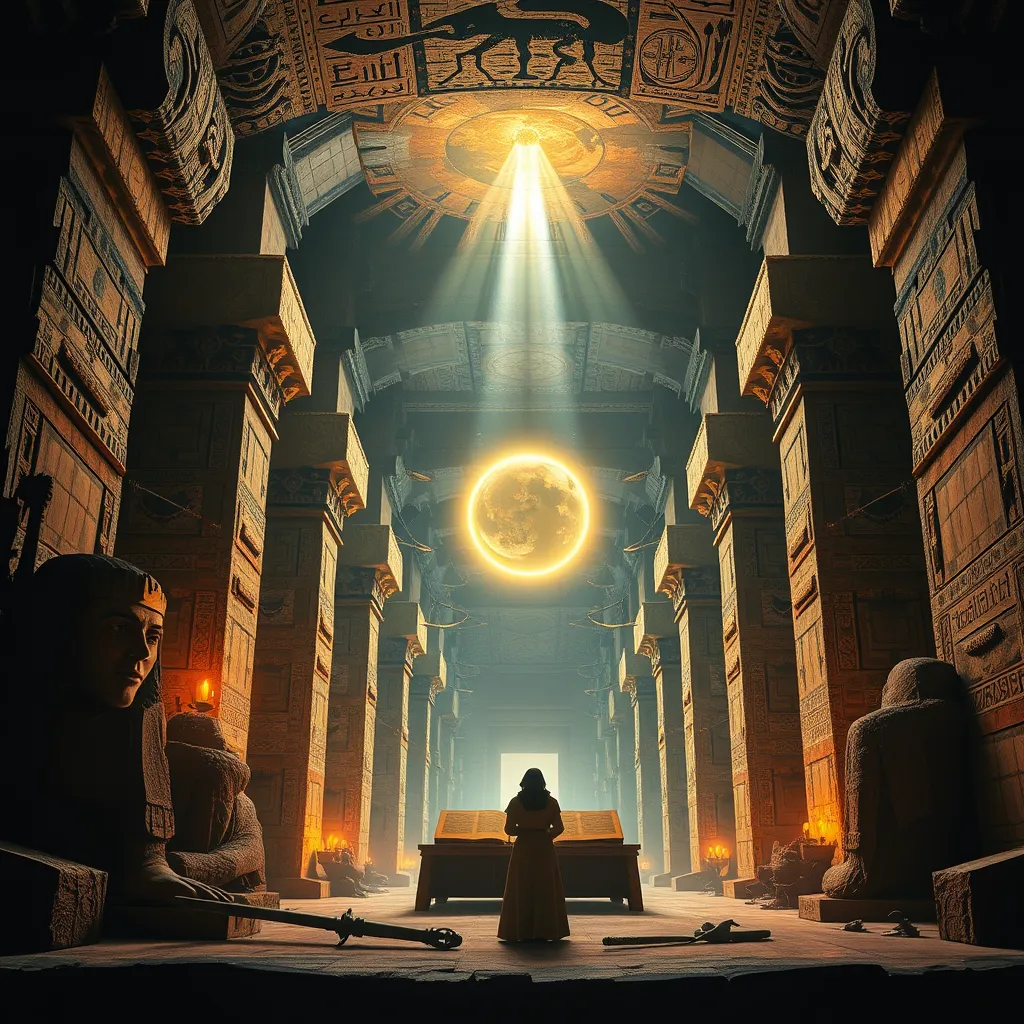The Book of the Dead: A Journey to the Heart of the Afterlife
I. Introduction
The Book of the Dead, known as the “Book of Coming Forth by Day,” is a significant ancient Egyptian funerary text that offers profound insights into the beliefs and practices surrounding the afterlife. This compilation of spells, prayers, and incantations was designed to guide the deceased through the trials of the afterlife, ensuring a safe passage to the realm of the dead.
Ancient Egyptians held a complex view of the afterlife, believing it was a continuation of life on earth. The journey after death was filled with challenges, but with the right guidance, the soul could achieve eternal peace and unity with the divine. This article aims to explore the historical context, the structure and content of The Book of the Dead, key themes, rituals associated with it, its influence on art and culture, and the archaeological discoveries that have shaped our understanding of this remarkable text.
II. Historical Context of The Book of the Dead
The origins of The Book of the Dead can be traced back to the early dynastic period of ancient Egypt, around 3000 BCE, evolving over centuries into the comprehensive text we recognize today. Initially, funerary texts were inscribed on tomb walls and coffins, but with time, they were compiled into papyrus scrolls, making them more accessible to the deceased.
Comparatively, The Book of the Dead shares similarities with other ancient texts such as the Pyramid Texts and the Coffin Texts. However, it is unique in its personalized approach, allowing individuals to select spells that resonated with their beliefs and needs for the afterlife. The preservation of these texts relied heavily on priests and scribes, who meticulously copied and maintained them throughout the ages, ensuring their survival for millennia.
III. Structure and Content of The Book of the Dead
The Book of the Dead is typically written on papyrus scrolls, adorned with vibrant illustrations that depict scenes of the afterlife and the gods. The format varies, but many scrolls measure several meters in length, allowing for extensive content.
Key spells and chapters include:
- Spell 125: The Weighing of the Heart
- Spell 1: The Opening of the Mouth
- Spell 30B: The Chapter of the Two Ways
Throughout the text, symbolism and imagery are prevalent, with depictions of gods, goddesses, and various rituals that serve to guide and protect the deceased. Common symbols include the ankh (symbol of life), the scarab beetle (rebirth), and the hieroglyphs representing the journey of the soul.
IV. The Journey of the Soul: Key Themes
Central to The Book of the Dead is the concept of Ma’at, representing truth, balance, and cosmic order. The ancient Egyptians believed that living in accordance with Ma’at was essential for achieving a favorable judgment in the afterlife.
The deceased faced numerous trials, including encounters with hostile deities and navigating treacherous paths. One of the most critical moments was the judgment by Osiris, the god of the afterlife, where the heart of the deceased was weighed against the feather of Ma’at. A heart lighter than the feather indicated a life lived in harmony, leading to eternal life in the Field of Reeds.
V. Rituals and Practices Associated with The Book of the Dead
Funerary practices in ancient Egypt were elaborate and steeped in tradition. The preparation of the body through mummification, the construction of elaborate tombs, and the performance of rituals were all integral to ensuring a successful journey into the afterlife.
The Book of the Dead played a vital role in these burial ceremonies, often placed in the tomb alongside the deceased. It served as a guide, allowing the soul to navigate the challenges it would encounter. The spells were recited by priests or family members, invoking the protection of the gods.
In modern times, The Book of the Dead has influenced various interpretations of death rituals, emphasizing the importance of honoring the deceased and recognizing the transition from life to death.
VI. Influence on Art and Culture
The Book of the Dead has inspired countless artistic representations throughout history. From ancient murals to contemporary adaptations, the themes of the afterlife and the journey of the soul have captivated artists across generations.
Literature and modern media have also drawn from The Book of the Dead. Its narrative elements and rich symbolism have found their way into novels, films, and even video games, highlighting humanity’s enduring fascination with the afterlife.
In contemporary culture, the quest for understanding death remains prevalent, with The Book of the Dead serving as a poignant reminder of the beliefs and rituals that shaped ancient Egyptian spirituality.
VII. Archaeological Discoveries and The Book of the Dead
Numerous archaeological finds related to The Book of the Dead have enriched our understanding of ancient Egyptian culture. Notable discoveries include well-preserved papyrus scrolls, tombs adorned with inscriptions, and artifacts that provide context to the rituals surrounding death.
Insights gained from translations and studies of the text have unveiled the complexities of ancient Egyptian beliefs. Scholars have deciphered numerous spells, allowing modern audiences to grasp the nuances of the afterlife journey.
The significance of these discoveries lies not only in the preservation of the text but also in the illumination of ancient Egyptian society, its values, and its understanding of existence beyond death.
VIII. Conclusion
In summary, The Book of the Dead serves as a crucial artifact in understanding ancient Egyptian beliefs about the afterlife. From its historical context and intricate structure to the rituals and artistic influences it has inspired, the text continues to resonate with those seeking to explore the mysteries of death.
The lasting legacy of The Book of the Dead is evident in its influence on spirituality and culture, reflecting humanity’s quest for understanding the afterlife and the profound questions surrounding existence. The journey it offers is not just a guide for the deceased but a testament to the enduring human desire to comprehend what lies beyond the veil of death.




